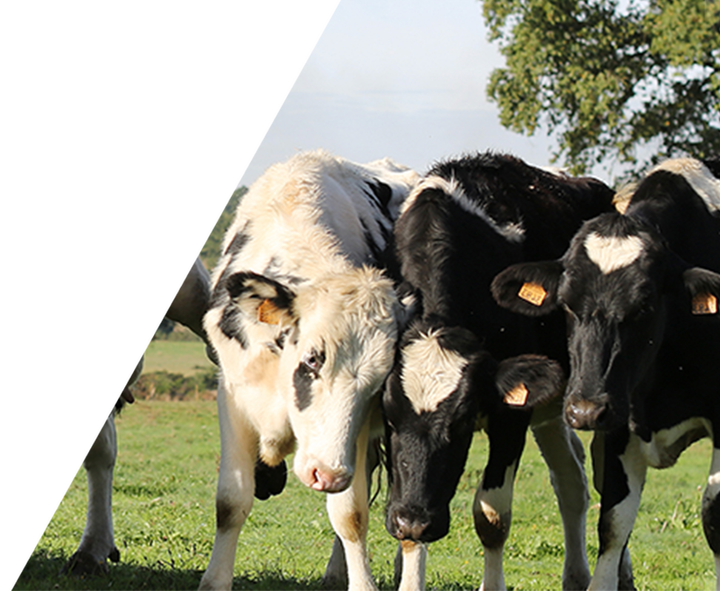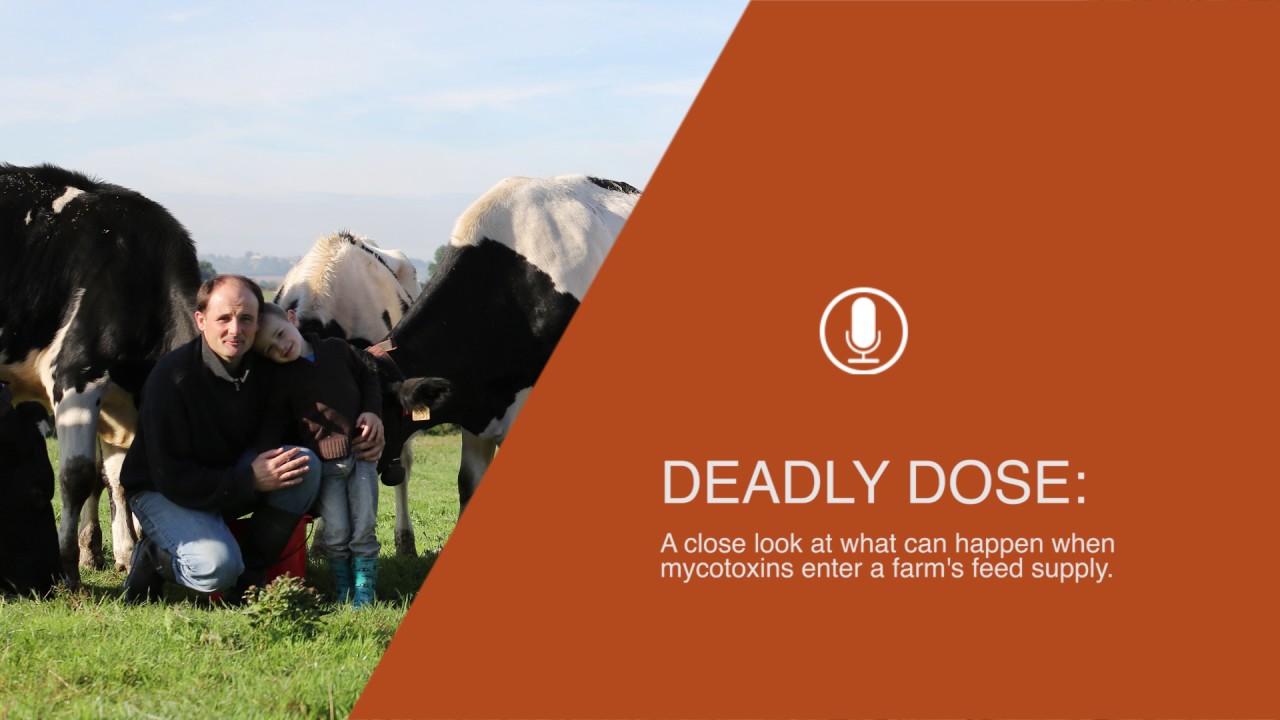


Estimated Article Read Time:
8m40s
Deadly Dose
A close look at what can happen when mycotoxins enter a farm’s feed supply.
It happened fast: one day in early January, cows on the 600-head dairy farm of a predominantly Holstein herd were performing well, and the next they began to slide downhill. Rough coats, dropping milk production, and then a mounting death toll … it became crystal clear that a major problem needed dealing with.
The rapid pace of the situation and clean necropsy results left Harry Bristol, the farm’s nutritionist, in a mix of frustrated and baffled emotions. After eight years of working side-by-side with the farm owner in consultation on the herd’s nutrition, Bristol had the calibration of the dairy’s rations down to a finely tuned art.
The former town kid, turned dairy farmer, turned animal nutritionist took this very farm on as a client when he first joined Lutz Feed Co. in the United States’ dairy oasis in the state of New York.
The company, with a reputation built on a successful philosophy of ‘quality work builds good business’, has a client portfolio of 30,000 head of dairy cows - 4,000 of which Bristol manages.
“[Harry] Bristol had witnessed first-hand what can happen when cows don’t agree with the formula.”
His protocols are straightforward: take multiple forage samples from a farm each month to test quality and nutritional value, to calculate what combination of feedstuffs would be needed for cows to hit a milk target, while obtaining their volume of feed intake, to hit that sweet spot for optimum efficiency.
While calculations are the first dictator of a ration, Bristol had witnessed first-hand what can happen when cows don’t agree with the formula. Eight years ago, when he took over this same herd as a client, it was amid a Hemorrhagic Bowel Syndrome outbreak that was wreaking havoc on the cows’ digestive system – leaving infected victims with intestines full of blood.
culprit was too much starch being passed into the small intestine undigested, triggering a deadly reaction. Nine months after the ration was reconfigured, the herd was finally back to normal.
Because of the farm’s history with HBS, Bristol initially thought the same problem may be
resurfacing.
"One day a cow would be looking at you while chewing her cud, and the next she would die,” says Bristol. “At first, I thought it may be Hemorrhagic Bowel Syndrome again – these things happen.”
"Then one day, while talking to the dairyman, it hit me. We were dealing with mycotoxins."
As the cows’ appetites declined, so did body condition and milk production. Hair coats were rough, postpartum “fresh cows” fell apart with ketosis after calving and the herd collectively looked poor. While Bristol had immediately dialled in on his rations when cows first started to slip, his theory of HBS striking again went out the window after a necropsy by the farm’s veterinarian revealed clean digestive systems and no telling signs of disease.
“I kept looking at the ration, looking at the cows and looking at the feed,” recalls Bristol. “Then one day, while talking to the dairyman, it hit me. We were dealing with mycotoxins.”
As a practice with all his clients, Bristol sends feed commodity samples off to be tested for mycotoxins before entering a farm’s feed supply. Not once had he ever received results back showing toxic levels, leaving him to never worry about mycotoxins.
However, the recent turn of events left him uneasy with any previous formalities, and through the suggestion of a fellow nutritionist, he reached out to John Winchell, Alltech’s area sales representative on February 22, 2017, almost two months after the first early symptoms began to show.
On Winchell’s advice, samples of the farm’s high moisture corn, corn silage and cottonseed were shipped off that very day to Alltech to be run through the company’s 37+ analytical program. When the test results rolled in to John on March 6, he immediately dropped everything and contacted Bristol.
PULL THE COTTONSEED
Like death and taxes are to mankind, mycotoxins are unavoidable in livestock feed commodities, so it was no surprise to Winchell when the high moisture corn and corn silage tested positive for DON – a common Type B trichothecenes mycotoxin – along with fusaric acid. However, the levels were right at or well below the safe mark at 900 parts per billion (ppb) DON and 150 ppb fusaric acid for the high moisture corn, and 1900 ppb DON and 526 ppb of fusaric acid for the corn silage.
The cottonseed was another story, pulling a toxicity level of 3200 ppb of deadly T-2 and HT-2 mycotoxins. While these fusarium mycotoxins are not very common, they are the most lethal, with anything more than 200 ppb being a high-risk amount – something the dairy farm in NY was painfully finding out.
“As soon as I got those results, my eyes about popped out of my head,” Winchell says. In his 20+ years of working in the forage and nutrition industry, he had never seen T-2 levels that severe. That very day, the farm pulled the cottonseed from the rations and shortly after, began feeding a simple mycotoxin binder in its feed.
In total, 10 cows died as a result of the deadly levels of mycotoxins in the cottonseed, with milk dropping into the upper 60s (c. 30 litres), says Bristol. However, within days of pulling the compromised cottonseed, the herd began to perk up. And roughly two months later, cows that are 45 days fresh have jumped from the mid-70s (33 litres) of pounds of milk production to a strong 98 lbs (44 litres) of milk per day.
Disaster averted, thanks to some timely mycotoxin testing.
AN ON GOING BATTLE
When crops in the field or harvested grain become mouldy, visible and sometimes invisible fungi generate poisonous mycotoxins.
While beef and dairy cattle can withstand higher levels of mycotoxins compared to other species of livestock due to their ruminant digestive systems, excessive amounts of the mould by-product will work together to suppress the immune system, alternate the endocrine and exocrine system, affect nutrient absorption and reduce feed intake.
With more than 500 known types of mycotoxins and countless unknown types impacting crops around the world ranging from coffee beans to soybeans, they are impossible to escape. To top it off, some mycotoxins work synergistically with each other, elevating what would be safe levels of multiple mycotoxins to lethal levels when digested by livestock.
“They are everywhere,” says Winchell. While the territory rep is quickly closing in on his rookie year with Alltech, his carefully constructed double decade career path in forage quality and nutrition makes him no stranger to the prevalence of mycotoxins. He says there are two prominent ways crops can become infected.
“…a lack of crop rotation and consistent no-till farming practices leave mycotoxins residues in field, priming the next set of crops for mycotoxins.”
“The two foremost ways are field born and storage born,” he continues. “And the two can go back and forth; meaning field mycotoxins may also flare up when storage is unstable.”
While Mother Nature plays a leading role in the growth of mycotoxins by stressing crops with drought or supplying optimum mould growing conditions with excessive moisture, some farming practices may have a contributing impact, says Winchell.
According to him, a lack of crop rotation and consistent no-till farming practices leave mycotoxins residues in field, priming the next set of crops for mycotoxins. Storage conditions also have a huge impact, he says, with unstable storage conditions and poorly packed bunkers and silos creating a good environment for mould growth.
With all of these factors working against farmers and their livestock, the case of more comprehensive testing for mycotoxins and taking preventative action by feeding mycotoxins binders is a clear win for both Bristol and Winchell.
“If we hadn’t found the problem when we did, it is scary to think about how many more cows theycould have lost,” says Winchell. “That’s where I think the mycotoxins testing is a very valuable tool.”
